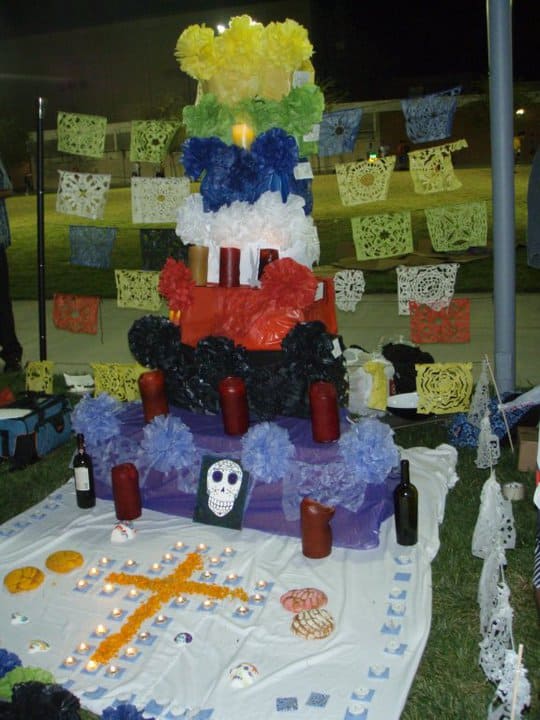The smell of cempasuchitl (Mexican marigolds) would often take over the busyness and pollution of the city. It signified the beginning of a colorful celebration that I did not fully understand, but certainly enjoyed. As a child, Día de Los Muertos (Day of the Dead), was a moment to remember those who had gone before us. It served as a tribute. As a young teenager, Día de los Muertos, served as a tool to humorously deal with realities we could not overcome.
Through altars and short poems, sorrows and anecdotes were expressed in a cheerful tone during this season and out of fear many mocked death in an effort to overcome it, if only momentarily. Doing so alleviated the harsh realities of a broken world and of an imminent destiny.
Regardless of the many perceptions of this celebration, I think Día de los Muertos today can serve in bridging many to Jesus. I want to challenge us to point out the glimpse of the greater story of life in this celebration.
Perhaps behind this tradition there is a sense that death is not how things ought to be, that it is contrary to our existence. What if we spoke truth into the evident need to overcome death?
Maybe we are the ones who could complete the story though sharing about the One who overcame death so that things are what they ought to be.
Maybe we are the ones who could complete the story though sharing about the One who overcame death so that things are what they ought to be.
In your campus, there might be a Día de los Muertos celebration, where different groups or individuals set up “altares”. This might be a great place to meet Latinos and to engage in significant spiritual conversations as the topics of spirituality and death are easy to come up.
I have seen “altares” (display tables with relevant artifacts) to remember loved ones, to make a statement about ideas or philosophies or to humorously deal with realities.
An altar to the dying economy would be an example of humorously dealing with realities that are hard to overcome.
Last year at a campus in Southern California students decided to make an altar with colorful paper representing different aspects of the gospel, much like a gospel bracelet. Every time, someone came by to ask them what the topic of their altar was they shared the gospel through explaining each of the color specific levels.
Sandy, @itsovalle, served for several years with Destino in Texas and California. She has a heart for creating multicultural communities of belonging where foreign-born and native-born people can experience the kingdom of God together. She believes God uses displacement and migration as essential catalysts to carry out his mission. Currently working at World Relief, Sandy empowers churches and communities to engage their immigrant and refugee neighbors
photo courtesy: Bea Ibarra
